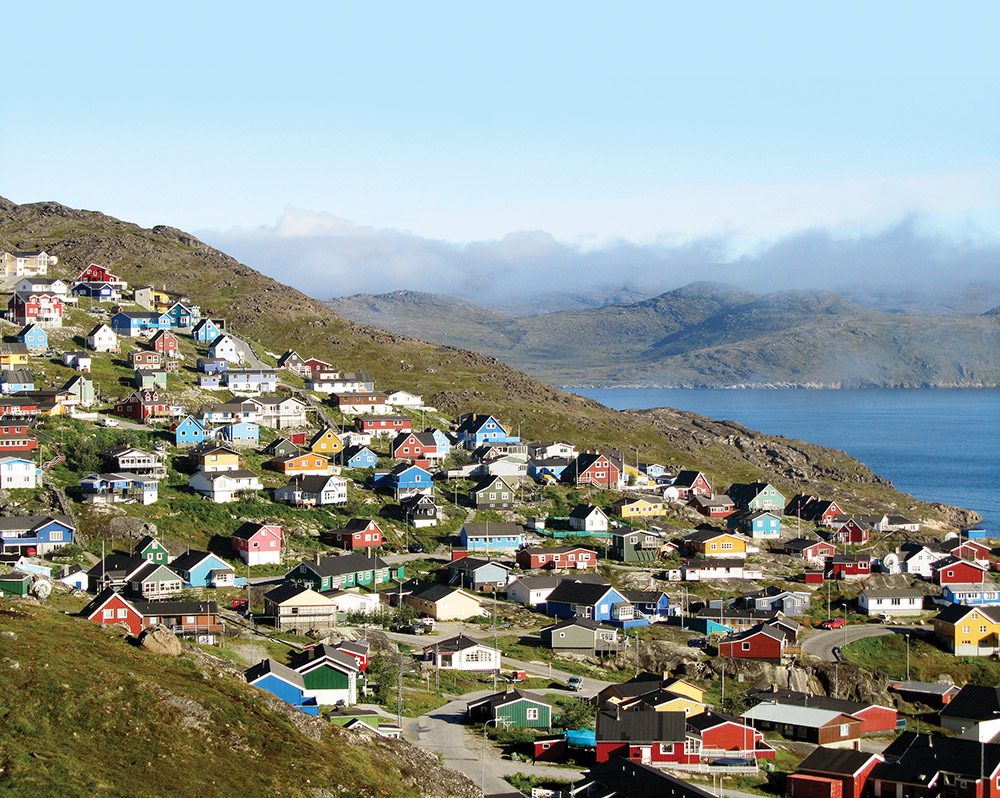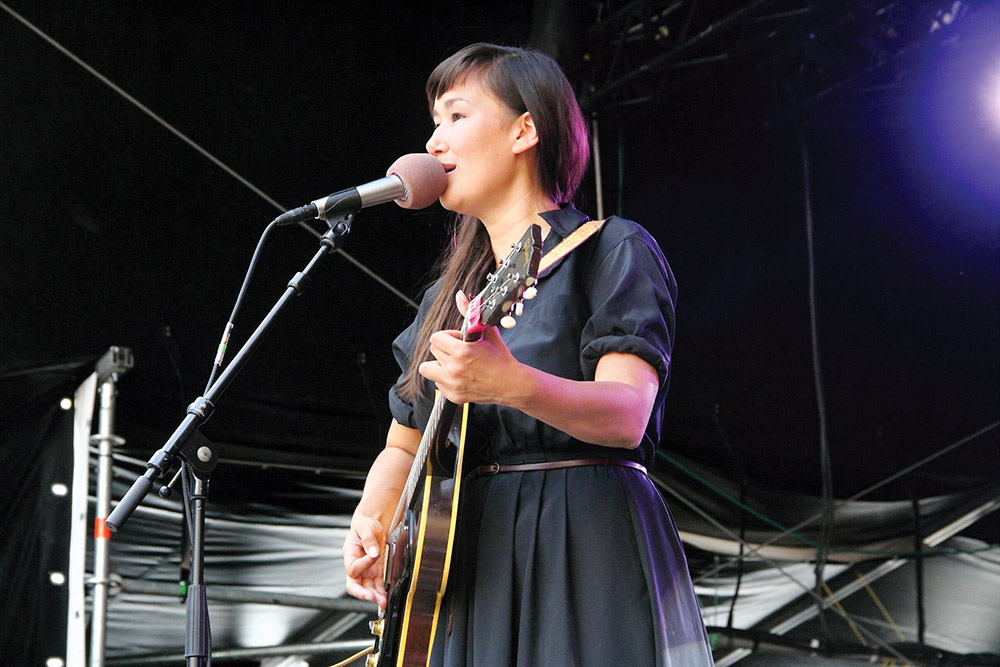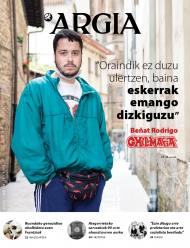Greenland recovered from Kalaallit Nunaat
- Greenland achieved its autonomy with Denmark in 1979 and renewed its status in 2009. Their language has become stronger since then: it is the only official language, they study in Greenland at all levels of school, and their own language predominates in administration, in local institutions and in the world of work.

The last conference of the cycle Hitz adina mintzo was in April in Gasteiz, in the House of the Basque Country Oihaneder. End of course for this year and definitively, since after six courses there will be no further course. The conference on Greenland carried out this special tour of minority languages around the world.
Kalaallisut is the language in which the Inuit of Greenland speak, introduced to us by Eider Palmou and Txerra Rodríguez. Palmou is director of Child Education at ikastola Urretxindorra and member of Hik Hasi, among others. Txerra Rodriguez is a linguistic advisor in Emune. It is known in ARGIA, as it has a blog Argia.eus that aims to spread the sociolinguistics. In conclusion, “Greenland is the largest island in the world, as Australia is considered a continent. It has 2,166,086 square kilometers, of which 44,087 kilometers of coastline and 81% of ice. 56,000 people live on the island, of whom 14,000 live in Nuuk, the capital.” As is well known, the inhabitants of the area live in towns and villages on the shores, as there are no human beings living inside the ice.
Palmou and Rodríguez told us in the preamble that there are nineteen groups of Inuit throughout the world, as the Inuit live not only in Greenland, but also in Alaska, Canada and Russia. “However, the economic and cultural situation of the Inuit from countries other than Greenland is worse.” And this worse situation also affects language. We are always talking about countries other than Greenland.
58.000 Greenland are spoken roads in the world. 53,000 of them in Greenland and the remaining 5,000 in the diaspora, although the majority are in Copenhagen, Denmark. 90% of the population living in Greenland knows how to speak in their language and “in recent years, knowledge and use are spreading”. That, however, you do not know, do not learn: “Most Danes living in Greenland do not speak of Inuit; it is true that most of them do not build life projects on the island.” And dedicating the first photo to listeners, the two rapporteurs exposed some myths and curiosities, as well as a historical timeline of time, before fully joining those relating to language.
Calaallisut
When they began to give some characteristics of language, Palmou and Rodríguez explained that in Greenland there are three great dialects: “North, indigenous; East, Tunumiisut; and West, Calaallisut.” And, in fact, the Kalaallisut dialect has been the basis on which the standard has been built, although it has also assimilated the words of the other two languages. “Thanks to the standard, the Inuit is understood.” Regarding standardization, the first attempt at linguistic unification dates back to the 1850s, carried out by Samuel Kleinschmidt, who was based on the western coastal dialect. This attempt at standardization made way for the Kleinschmidt proposals and standards to be reviewed in depth in 1973. Today, “the Inuit, at the local level, use three alphabets: in Greenland they use the Latin alphabet; in Canada, the syllabic; in Russian Siberia and Alaska, the Cyrillic.” Three alphabets and three linguistic states: “Solidly in Greenland, in Siberia and in Alaska, severely, and just beyond the Canadian Inuit community. In some parts of Canada it is working well, but not in others.” The rapporteurs pointed out in this space that the names of the Inuit have no gender, nor the language itself. It's a polysynthetic language, and like the Basque language, it has an ergative.
As for legal status, Greenland has been an official language since 1979, while at the same time it departed partially from the hand of Denmark and acquired autonomy, since Greenland and Danish became the official languages of the island: “After the Second World War, Greenland suffered a strong colonization of the Danes and an even more intense acculturation. For example, what was previously a nomadic people was forced by the Danish Government to put itself in one or the other. Christianity is also then on the island, which were the first animists, and are now Christian animists. At the same time, the Danish government welcomed several boys and girls from Greenland and took them to Copenhagen to study – also university studies – and then return to the island and lead. This had a boiling effect, however, because the Hai-Etxas moved to Copenhagen were the ones that most enthusiastically promoted the autonomist movement, which embarked on the Arctic Revolution.” Autonomy was made peacefully and the Inuit took on the existing competences and not, except two, justice and the army, which remain in Denmark ' s possession. In
2009, with the renewal of the Statute of Autonomy, Greenland was appointed as a single official language. It is the most widely used language in the administration. The Oqaasiliortut administrative organization is in charge of language, advising the government on language policy. Among other things, it has a toponymy commission to recover and normalize its names.” And what Palmou and Rodriguez said to us: “The Oqaasiliortut organization is very close to the people, even if it is part of the government.” Danes are always present in the field of justice, especially where the high courts and the rest are based in Denmark, where the presence of Danes is important. However, in local organisations and in the working world, Danes are disappearing in Greenland.

Education and the media
Since the 1950s of the last century, Danes have been deeply involved in the education system in Greenland, the main language to be able to access higher education. The situation changed in 1979, when the island reached autonomy. In the words of Palmou and Rodríguez, “together with the acquisition of autonomy, the inuit entered the school, from the lower levels. And they also started building the Greenland curriculum. Currently, schooling is compulsory for 6 to 18 years. All schooling takes place in Greenland.” As for Danish, the subject of Danish appears in the same primary education. On the contrary, English has to wait until secondary. “The Inuit have invested heavily in material and pedagogy in recent years,” the two rapporteurs said.
As for the media, the first newspaper in Greenland was published in 1861: It's called Atuagdliutit, and it's still alive. It is not, however, the only journalist. “In 1958 they opened the second newspaper: Sermitsis. As for radio, the first broadcasts to Greenland took place in 1926, although until 1982 public radio television was not launched, which is KNR Radio and KNR TV. From the outset they decided to make their programmes in Greenland, but with them, for example, on television, they put on the antenna several Danish television programmes. Since 2007, local television switched to TDT and started broadcasting only to Greenland.” And, on the other hand, there are local broadcasters, general information magazines and specialized, both sports and cinegetics or tourism. All Greenland receive local production of press and radio TV. “But there the local means that it belongs to a community of about 2,000 people and, on the other hand, the distances from one place to another are very large,” Palmou and Rodríguez warned.

Culture
Palmou and Rodríguez wanted to give the following information: “The first novel in Greenland was published in 1914. The first novel written by a woman in 1981 saw the light.” As for music, in addition to Inuit folk music, they use modern styles such as rock or hip-hop. “Some group names and singers are there Nive Nielsen, Simon Lyuge, Sumé, Nanook, Uyarakq and Prussic.” They also have a national theater company in Greenland, with three or four plays performed each year, in Greenland, exhibited from village to village, linking popular tradition and the avant-garde. As for painting, Palmou and Rodríguez named the artist Aron de Kangeq as a reference and announced the performance of several films. The two rapporteurs set Inu and Smila as an example.
In Greenland, Palmou and Rodríguez placed it within a generalized and widespread revitalization, have been able to revitalize the language, closely linked to a certain Calaaleq or Greenlandic feeling: “This feeling of calaaleq was triggered in the 19th century and swollen in the 60s of the 20th century. A small group of activists breathed the pride of being Greenland and today that commitment dominates in Greenland.” For Palmou and Rodríguez, who have guided our journey through this white country, “this movement largely explains the Arctic Revolution that has been ignited in Greenland.” This was the term used: Arctic Revolution.
"They've managed to do the people and they're leaving."
Eider Palmou and Txerra Rodriguez were in Greenland in 2013. They made a 21 day road, next to the Inuit. They collected information, and there's an interview with anthropologist Francesc Bailon. And they would be on the island for another year, if it hadn't been a pandemic. The reflection has come and asked us to compare the situations of Euskal Herria with those of Greenland: “The autonomy of the CAPV was the same as that acquired by the CAPV. The development of both localities has been very different. They also began with two official languages, the Inuit and the Danish. However, he soon joined the Inuit administration, education, the media... In 2009, the Autonomy Statute was renewed and Inuitera was designated as the only official language. However, they are bilingual or trilingual, they know Greenland, Danish and English. Yet they are the first in Greenland. They have made a country, despite their great economic dependence on Denmark. However, due to climate change, the ice sheet is thinning and the exploitation of rich subsoil minerals is cheaper than ever.” And the last word. “They are communities, they have the community above the person. They have been able to do the people, they have taken over and left. A referendum on self-determination was to be held in June of this year... They go. We, on the other hand…”.










